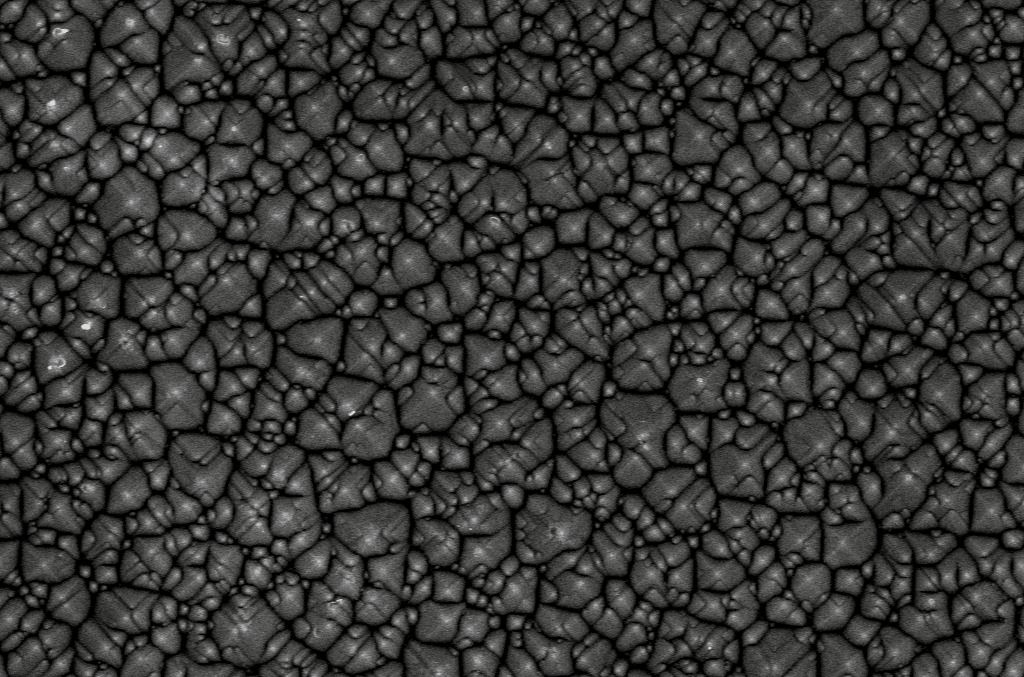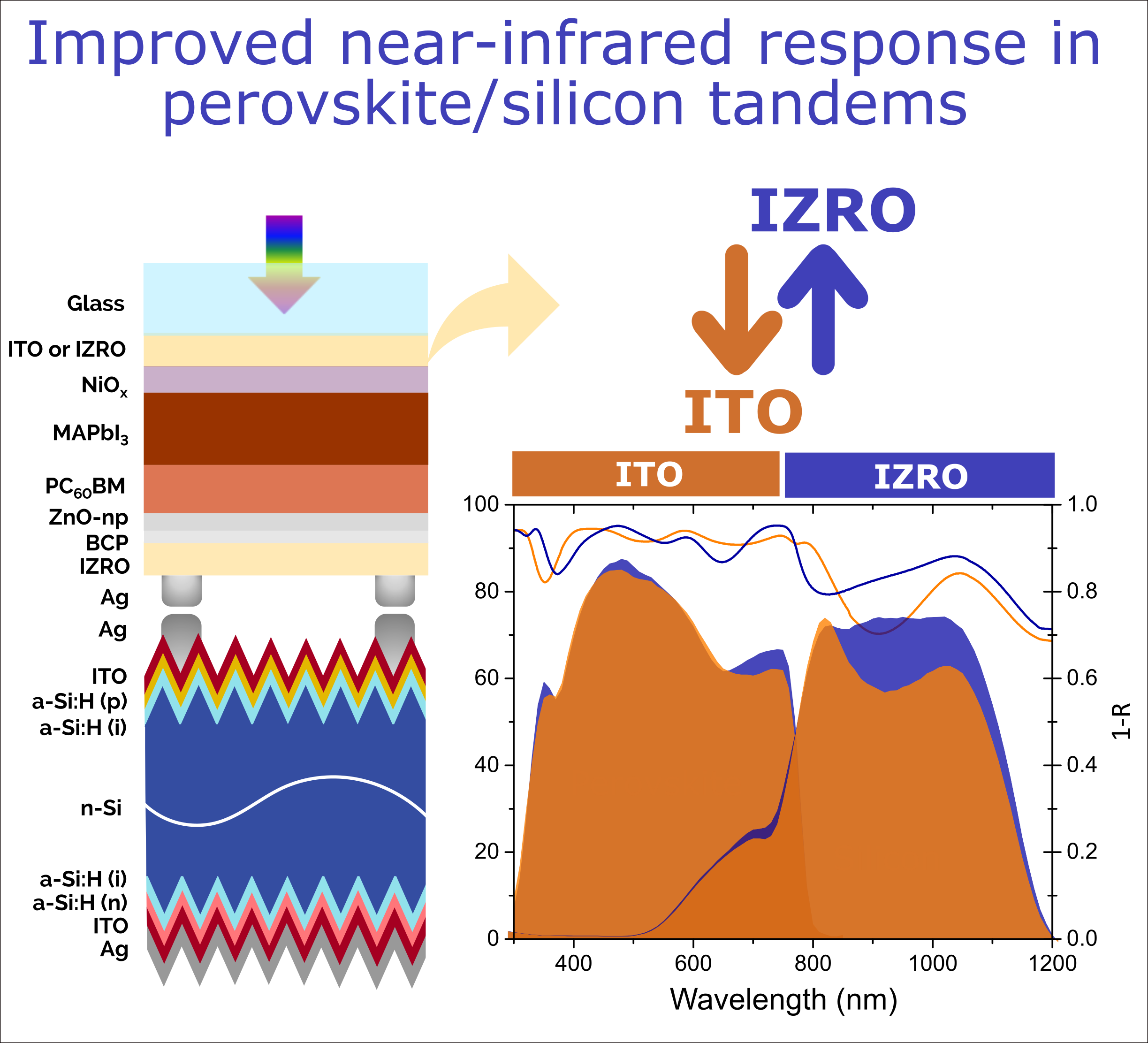


10 April, 2019
Parasitic absorption in transparent electrodes is one of the main roadblocks to enabling power conversion efficiencies (PCEs) for perovskite‐based tandem solar cells beyond 30%. To reduce such losses and maximize light coupling, the broadband transparency of such electrodes should be improved, especially at the front of the device.
In this study, Erkan Aydin and coworkers shows the excellent properties of Zr‐doped indium oxide (IZRO) transparent electrodes for such applications, with improved near‐infrared (NIR) response, compared to conventional tin‐doped indium oxide (ITO) electrodes, are shown.
Optimized IZRO films feature very high electron mobility (up to ≈77 cm2 V−1 s−1), enabling highly infrared transparent films with a very low sheet resistance (≈18 Ω □−1 for annealed 100 nm films). For devices, this translates in a parasitic absorption of only ≈5% for IZRO within the solar spectrum (250–2500 nm range), to be compared with ≈10% for commercial ITO.
Additionally, the team is reporting 26.2% PCE for four‐terminal perovskite/silicon tandem devices with an absolute 3.5 mA cm−2 short‐circuit current improvement in silicon bottom cells is obtained by replacing commercial ITO electrodes with IZRO.

Figure: The four-terminal perovskite/silicon tandem solar cells device structure and EQE spectra of the device which is clearly showing the improved near-infrared response of the silicon bottom cells.
(Source: E. Aydin et al., Advanced Functional Materials 2019, 1901741.)
To read the full article, please click
Related News:
.png?sfvrsn=4da887ea_2)
KAUST team reports 26.2% PCE for 4T perovskite/silicon tandems enabled by IZRO electrodes.